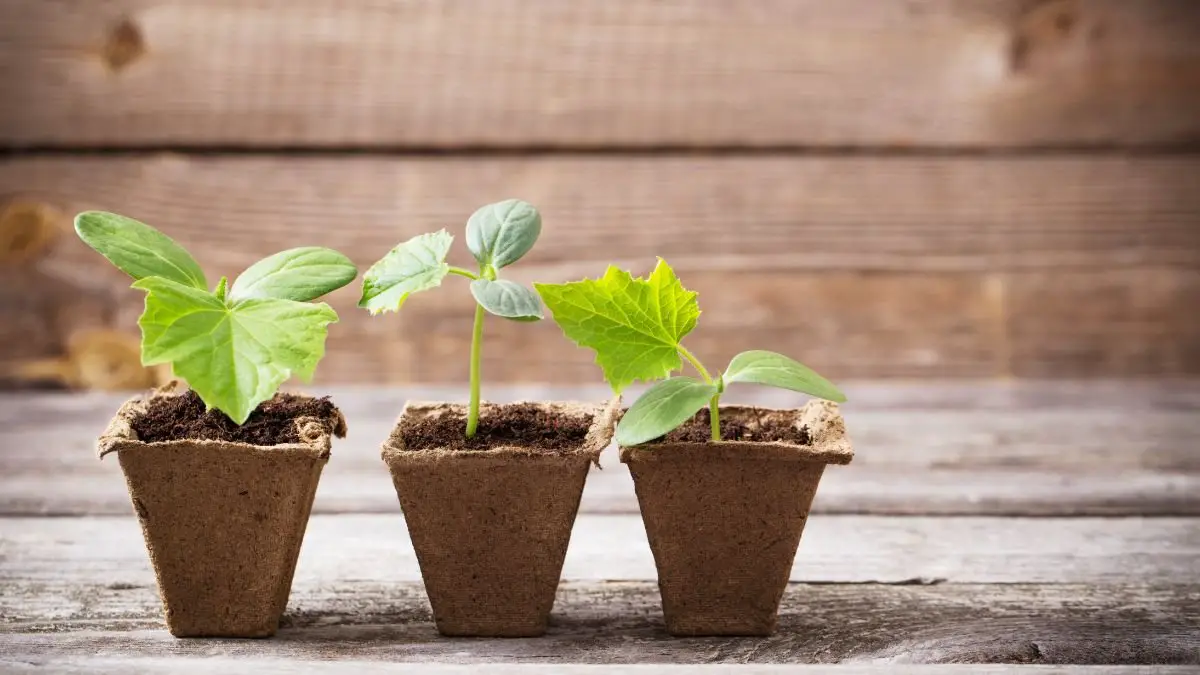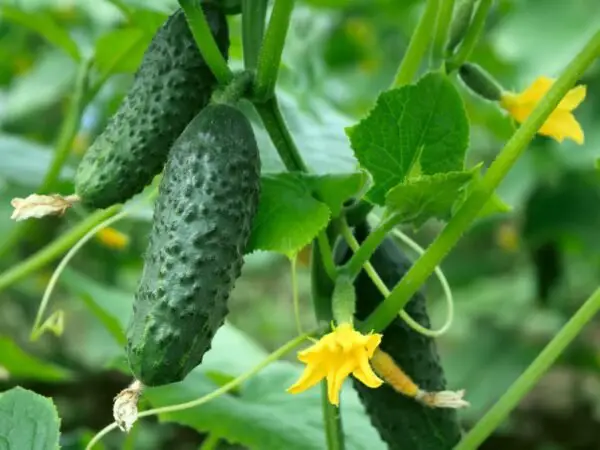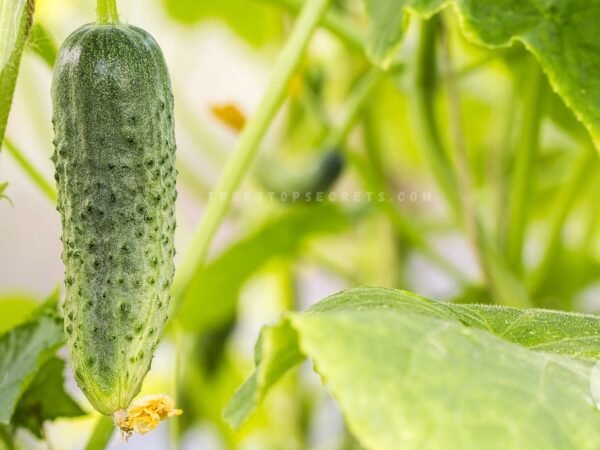
Deciding when to start cucumber seeds indoors can be the difference between a thriving garden and a lackluster harvest. Understanding the optimal timing for planting your cucumber seeds indoors versus directly in the ground is crucial for maximizing growth and yield. By starting cucumber seeds indoors, you gain a head start on the growing season, allowing you to enjoy an earlier and more abundant harvest. However, planting them too early can result in leggy seedlings that struggle to adapt once transplanted outdoors.
Knowing the right time to begin this process will set you up for success in your gardening endeavors. In this guide, we will explore the factors to consider when determining when to start cucumber seeds indoors, ensuring you achieve a bountiful cucumber crop.
Understanding the Best Time to Start
Factors Affecting Timing
When starting cucumber seeds indoors, the variety you choose plays a crucial role. Some types may require an earlier start than others. Consider the specific characteristics of the cucumber variety before planting.
Local climate conditions significantly impact the optimal time to begin cucumber seeds indoors. Evaluate the average temperatures and sunlight levels in your area to determine the most suitable timing.
To ensure a successful harvest, it's essential to evaluate the time needed for cucumbers to reach maturity. Different varieties have varying growth rates, so understanding this aspect is vital for proper planning.
Ideal Starting Months
For optimal results, it is recommended to start cucumber seeds indoors approximately 4-6 weeks before May 7th. This timing allows the seedlings to establish well before transplanting them outdoors.
Choose starting months that provide a head start to the growing season in your region. By beginning early, you can take advantage of a longer growing period and potentially increase your overall yield.
Aim for months that offer stable indoor conditions for seedlings. Consistent temperature and humidity levels are crucial for healthy seedling development before they are ready for outdoor transplantation.
Weather Considerations
Monitoring temperature fluctuations is essential as they can directly impact seed germination rates. Ensure that the indoor environment remains within the optimal temperature range for successful seedling growth.
Being aware of frost dates in your region is crucial when deciding on the ideal time to plant cucumber seeds indoors. Planting too early can expose young seedlings to frost damage, affecting their overall health.
Adjust indoor conditions such as light exposure and watering schedules to mimic ideal outdoor weather patterns. Providing a nurturing environment indoors will prepare your cucumber seedlings, content for a smooth transition once they are ready for outdoor planting.
Preparing for Seed Starting
Choosing the Right Seeds
When starting cucumber seeds indoors, select based on your preference—slicing cucumbers are great for fresh consumption, while pickling varieties are ideal for preserving. Consider disease-resistant options like Marketmore or Diva cucumbers to ensure plant health. Opt for organic or heirloom seeds if sustainability is a priority.
Gathering Supplies
Prepare 3" pots with drainage holes to avoid waterlogging and promote healthy root growth. Gather high-quality compost rich in nutrients like nitrogen, phosphorus, and potassium. Ensure you have stakes, trellises, and cucumbers ready to provide support as the plants grow.
Soil Preparation
For successful seed starting, use well-draining soil to prevent root rot caused by excess moisture. Mix compost into the soil to enrich it with essential nutrients vital for seedling development. Check soil pH levels; cucumbers prefer slightly acidic conditions around 6.0 to 6.8 for optimal growth.
Optimal Conditions for Germination
Temperature Needs
Maintain a consistent temperature range of 20-25 degrees Celsius for seed germination. Fluctuations can harm the delicate process. Consider using heating mats to ensure a stable environment for the seeds.
When starting cucumber seeds indoors, avoid exposing cucumbers to extreme temperature changes as this can stunt their growth. Consistent warmth is crucial for successful germination.
Lighting Requirements
To facilitate healthy growth, place your seedlings in a spot that receives ample sunlight. If natural light is insufficient, consider using grow lights to provide the necessary light exposure.
For even development, it's important to rotate your seedlings regularly, ensuring all parts receive equal light exposure. This practice helps prevent leggy growth and encourages sturdy plants.
Humidity and Watering
When starting cucumber seeds indoors, keep the soil consistently moist, but be cautious not to overwater and cause waterlogging. Regularly check humidity levels to avoid mold formation, which can be detrimental to seedlings' health.
Water your cucumber seedlings at the base rather than from above to ensure healthy growth. This method helps prevent fungal diseases by keeping the foliage dry, reducing the risk of infections.
Sowing Your Cucumber Seeds
Seed Depth and Spacing
Plant cucumber seeds about half an inch deep in pots to ensure proper germination. Adequate spacing is crucial to prevent overcrowding, allowing each seedling ample room to grow. Proper air circulation between cucumber seedlings is essential for their healthy development.
Germination Process
Expect cucumber seeds to germinate within 7-14 days under optimal conditions, which include consistent warmth and moisture. Keep a close eye out for tiny seedlings emerging from the soil, indicating successful germination. During this period, maintaining soil moisture is critical for the seeds to sprout effectively.
Care After Sprouting
After cucumber seeds have sprouted, thin out weaker cucumber seedlings to avoid competition for nutrients and space. This practice ensures that the remaining plants can thrive without constraints. Providing adequate airflow around the seedlings helps prevent damping off, a common fungal disease that can affect young plants. Once the seedlings develop true leaves, begin fertilizing them to support healthy growth.
Monitoring Seedling Growth
Identifying Healthy Seedlings
Seedlings should have vibrant green leaves and sturdy stems to indicate good health. A strong appearance is crucial.
Ensure the seedlings have well-established root systems for optimal growth and development. Roots are vital for nutrient absorption.
Avoid seedlings showing any signs of discoloration or stunted growth, as these are red flags for potential issues.
Troubleshooting Common Issues
Address yellowing leaves promptly to prevent nutrient deficiencies that can hinder growth and productivity.
Combat damping off, a fungal disease, by improving air circulation around the seedlings. Adequate ventilation is key.
Treat common pests like aphids with natural remedies such as neem oil to prevent damage to the seedlings.
Adjusting Conditions as Needed
Modify watering frequency based on the specific needs of the cucumber seedlings. Overwatering can lead to root rot.
Adjust lighting levels if seedlings appear leggy, indicating they are stretching towards inadequate light sources.
During dry periods, increase humidity levels around the seedlings to mimic their natural environment and promote healthy growth.
Transplanting Seedlings Outdoors
Knowing When to Transplant
Transplant seedlings once roots emerge from pots, indicating they've outgrown their containers. Repot them in larger pots for sustained growth. Timing the transplant aligns with the outdoor planting calendar.
Hardening Off Process
Gradually expose seedlings to outdoor conditions to acclimate them. Begin with short outdoor stints, increasing exposure gradually. Shield seedlings from strong winds during this hardening off phase.
Soil Prep for Outdoor Planting
Prepare garden beds by enriching the soil with organic matter. Clear the area of weeds and debris before planting. Incorporating compost enhances soil fertility, providing a conducive environment for plants.
Maximizing Your Harvest
Fertilization Tips
Using a balanced fertilizer is crucial for promoting healthy growth in your cucumber plants. This ensures they receive all the necessary nutrients to thrive. Apply fertilizers sparingly to prevent overfeeding, which can harm the plants instead of helping them grow. Consider opting for organic fertilizers as a more sustainable choice that benefits both the plants and the environment.
Pest and Disease Management
Regularly monitor your cucumber plants for any signs of pests such as cucumber beetles, which can quickly damage your crop if left unchecked. Implementing crop rotation techniques can help prevent the buildup of diseases in your garden soil, ensuring healthier plants in the long run. Utilize natural predators like ladybugs as a biological control method to manage pest populations without resorting to harmful chemicals.
- Pros:
- Organic fertilizers promote sustainability.
- Natural pest control methods reduce chemical usage.
Watering and Support Structures
When watering your cucumbers, make sure to water them deeply to encourage robust root development, leading to healthier and more productive plants. Providing adequate support by installing trellises or stakes will help the vines grow vertically, optimizing space and sunlight exposure. For efficient watering, consider using drip irrigation systems that deliver water directly to the plant roots while minimizing water wastage.
- Deep watering encourages strong root systems.
- Trellises optimize space utilization for vine growth.
- Drip irrigation systems ensure efficient water distribution.
FAQs About Starting Cucumbers Indoors
Benefits of Indoor Starting
Starting cucumber seeds indoors offers several benefits. Gain a head start on the growing season by planting seeds indoors before transplanting them outside. This ensures that your cucumbers have a longer growing period, leading to an earlier harvest. Control environmental conditions such as temperature, humidity, and light exposure to provide optimal growing conditions for your seedlings. By starting indoors, you can produce healthier and more robust seedlings that are better equipped to thrive when transplanted into your garden.
Using Non-Traditional Containers
When starting cucumber seeds indoors, consider using non-traditional containers for a unique gardening experience. Experiment with containers like hanging baskets to create vertical gardens or save space in smaller areas. Utilize recycled materials such as old buckets or plastic containers for an eco-friendly gardening approach that repurposes items you already have at home. Remember to ensure proper drainage in these containers by drilling holes in the bottom to prevent waterlogged soil and root rot.
Addressing Common Concerns
If you encounter challenges while starting cucumber seeds indoors, there are resources available to help address common concerns. Seek advice from local gardening experts who have experience with growing cucumbers in your specific region. They can provide valuable insights tailored to your local climate and soil conditions. Join online gardening communities where you can interact with fellow gardeners and receive troubleshooting tips for issues you may face during the indoor seed starting process. Keeping a gardening journal is also beneficial as it allows you to track your plant's progress, note any challenges encountered, and make adjustments for future seed starting endeavors.
Closing Thoughts
In conclusion, you now have a solid grasp on starting cucumber seeds indoors. By understanding the optimal timing, preparing the right environment, and closely monitoring growth, you're well on your way to a successful harvest. Remember to transplant your seedlings with care and continue to provide them with the necessary conditions for healthy growth outdoors. With these steps in mind, you can maximize your cucumber yield and enjoy the fruits of your labor.
Take action now by applying these insights to kickstart your cucumber seedling journey. Your dedication and attention to detail will surely pay off with a bountiful cucumber harvest. Happy gardening!
Frequently Asked Questions
When is the best time to start cucumber seeds indoors?
The best time to start cucumber seeds indoors is around 3-4 weeks before your last expected frost date. This allows the seedlings to establish before transplanting outdoors.
How can I prepare my cucumber seeds for indoor planting?
Before planting, soak cucumber seeds in water for 12-24 hours to help with germination. Use seed-starting mix in trays or pots, ensuring good drainage.
What are the optimal conditions for germinating cucumber seeds indoors?
Cucumber seeds require warm temperatures between 70-85°F (21-29°C) and consistent moisture for germination. Keep the soil moist but not waterlogged during this stage.
How deep should I sow my cucumber seeds indoors?
Plant cucumber seeds about 1 inch deep in the soil. Cover them lightly with soil, press down gently, and keep the soil consistently moist until germination occurs.
How do I monitor the growth of cucumber seedlings indoors?
Check on your cucumber seedlings daily for any signs of growth, such as emerging sprouts. Ensure they receive adequate sunlight or artificial light if growing indoors.
Image Source: Paid image from CANVA



